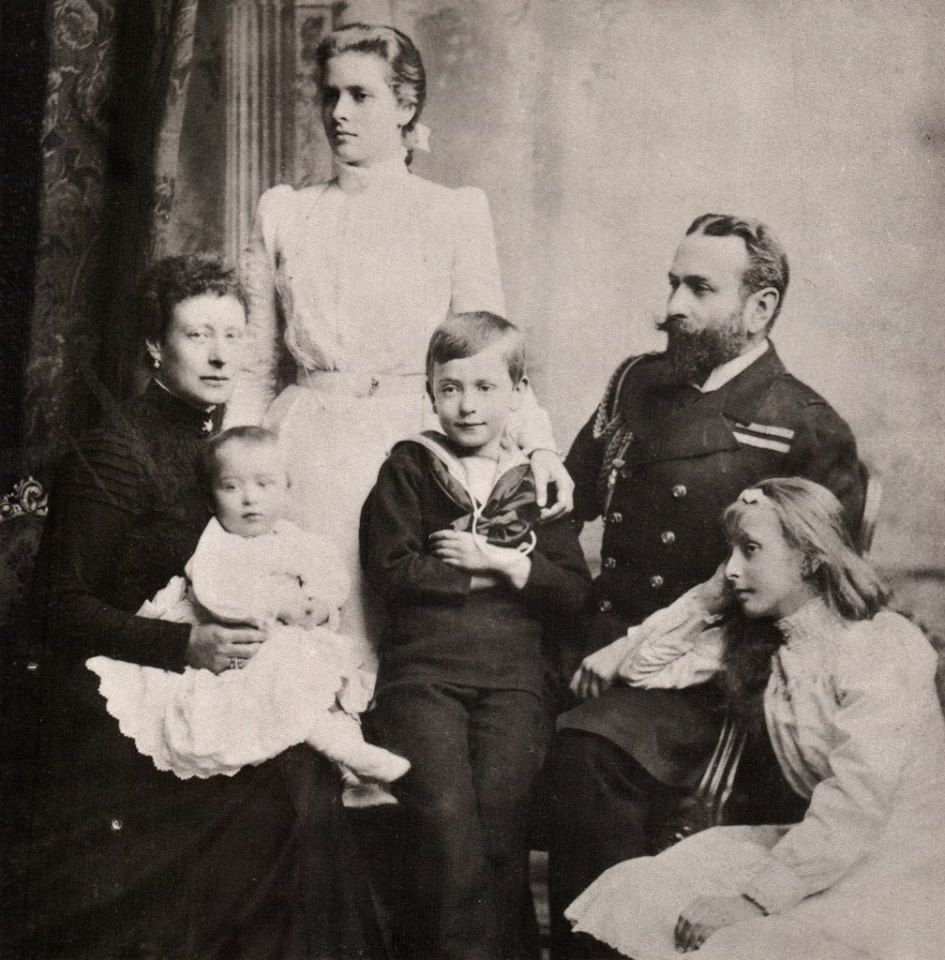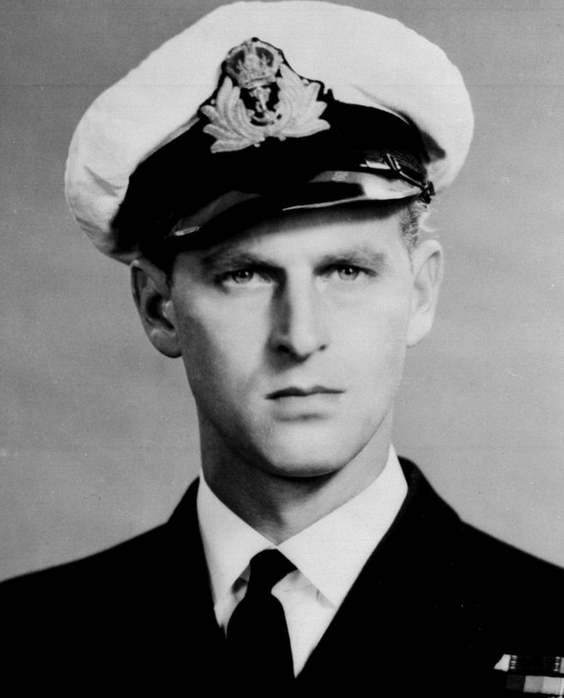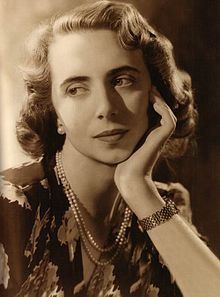Apr-2021
The Duke of Edinburgh and Filey
Although the Duke of Edinburgh never officially visited Filey, he will have undoubtedly been familiar with the town, both personally and professionally as a naval officer. As the nation pays a fond farewell to Her Majesty the Queen’s consort, we investigate his links to Filey, through his mother’s holidays in the town, to the Duke’s service with the Royal Navy on east coast convoy duty.
In 1900 the Battenburg family came to Filey for a month-long holiday. They stayed at 36 The Crescent. History now remembers them as the Mountbatten’s, following a change of name during World War One as a response to rising anti-German sentiment (the Royal family similarly transformed themselves from Saxe-Coburg to Windsor in 1917).
The head of the family was Prince Louis of Battenberg. Despite being born in Austria, at the age of fourteen Battenburgh enrolled in the Royal Navy. In a career spanning four decades he rose through the ranks to become, in 1912, First Sea Lord, the professional head of the British naval service. Prince Louis had married Queen Victoria’s granddaughter, Princess Victoria of Hesse and by Rhine, in 1884. They had four children. It was their children who would have the biggest impact on the life of the Duke of Edinburgh.

The Battenburg’s; Princess Alice (the Duke of Edinburgh’s future mother) is seated furthest right.
The Battenberg’s eldest daughter was Princess Alice. She married Prince Andrew of Greece (actually a Danish Prince whose family had been invited to become the royal family of Greece). Their son Philip was born on the island of Corfu on 10 June 1921. However, aged only 18 months, Philip was evacuated from Greece with his family following a military coup that cast the royal family from power. The Greek royal family escaped on board the Royal Navy light cruiser HMS Calypso. It was Philip’s first encounter with a navy to which he would devote much of his life.
The family lived in exile in France, but as his parents split up, Philip was taken under the wing by his British family. His Uncle George, the second Marquess of Milford Haven, secured Philip a place at Cheam Prep School and, outside term time, Philip lived with his uncle at Lynden Manor overlooking the River Thames. Philip’s Uncle George, was the eldest of the Mountbatten sons who holidayed at Filey in 1900 (he is pictured above in the centre wearing the uniform of a naval cadet). He served in the Royal Navy for virtually his entire life, ending his career as Captain George Mountbatten, 2nd Marquess of Milford Haven, GCVO. He married the beautiful Countess Nadejda de Torby, a member of the Russian Imperial family and great-granddaughter of the poet Aleksandr Pushkin. Nadejda became embroiled in allegations of an affair with her friend Gloria Vanderbilt (upon whom the character of Holly Golightly in Breakfast at Tiffany’s was supposedly based upon).
Philip completed his education in the Scottish Highlands at Gordonstoun School. He appeared set on a career in the RAF, but another of his uncles, this time Louis Mountbatten, encouraged Philip to join the Royal Navy. Louis Mountbatten was the youngest member of the Battenburg family who holidayed at Filey in 1900 (pictured as a babe in arms on his mother’s knee in the family photo). He was destined to become Admiral of the Fleet Louis Francis Albert Victor Nicholas Mountbatten, 1st Earl Mountbatten of Burma. In a stellar career Louis was, Supreme Allied Commander, South East Asia Command (1943–1946), the last Viceroy of India (1947) and the first governor-general of independent India (1947–1948). He later became First Sea Lord, Chief of Defence Staff and Chairman of NATO. He was murdered by the IRA by a bomb planted on his boat in County Sligo in 1979.
Philip’s uncle’s advice proved to be invaluable. A star student at the Royal Naval College, Dartmouth, he saw service aboard the battleship HMS Ramilies, the cruisers Kent and Shropshire, before transferring to the battleship Valiant. Aboard the latter he served as searchlight control officer, and played a central role, in a night action off Cape Matapan in 1941 when the Royal Navy sank three Italian heavy cruisers and two destroyers. In the wake of the battle the Italian fleet essentially abandoned the Eastern Mediterranean to the British.

The Duke of Edinburgh when serving as an officer in the Royal Navy
Philip was promoted to Sub-Lieutenant and transferred to the destroyer HMS Wallace. The ship was based at Rosyth on the Firth of Forth and was tasked to escorting east coast convoys. In that role Philip will have come intimately familiar with the East Coast War Channels, two swept and protected routes for shipping between the English Channel and the Northern Isles. Instillations at Hunmanby Gap (where there was a seaplane base) and Flamborough Head were part of the East Coast War Channels, thus Philip will have undoubtedly sailed upon the waters of Filey Bay on numerous occasions.
In 1945 Philip was serving in distant waters, as First Lieutenant on board the destroyer Whelp as part of the British Pacific Fleet. He was aboard the ship in Tokyo Bay when the Japanese signed the terms of surrender that ended World War Two. By this time Philip was courting the young Princess Elizabeth and it has often been stated that, had he not married the future Queen, Philip may well have followed in the footsteps of his Uncle Louis and become First Sea Lord. Philip was given command of the frigate HMS Magpie that was based in Malta, but his active naval career came to an end when Elizabeth become Queen in 1952.
Another link between Filey and the Duke of Edinburgh was his cousin Princess Katherine of Greece and Denmark. She was probably Filey’s last royal holidaymaker, she stayed at the Royal Crescent Hotel for the month of August in 1936. The princess came from an extraordinary background, she was the granddaughter of a King and a Kaiser, the daughter of a King, the sister of three Kings and a Queen, was destined to be the aunt of a King and two other Queens and, of course, a first cousin of the Duke of Edinburgh.
In 1934 Princess Katherine was a bridesmaid – along with the young Princess Elizabeth, now Queen Elizabeth II – at the wedding of the Duke of Kent and Lady Katherine’s cousin Princess Marina of Greece. In 1935 the monarchy was restored in Greece and Lady Katherine returned with her family to Athens. All her three brothers were, at various stages, Kings of Greece, but the political turmoil, that had so badly affected her youth, continued, with frequent coups and social unrest in the country. When the Second World War broke out in 1939 she joined the Greek Red Cross and was involved in nursing at army field hospitals. When the German’s overran Greece in 1941, the family was plucked to safety by an RAF flying boat.
After the war she came to Britain, on the long sea voyage from South Africa, she met her future husband, Major Richard Campbell Brandram MC, of the Royal Artillery. They were married in 1947. In the same year Katherine attended the wedding of Princess Elizabeth and her cousin Prince Philip. In her later years Lady Katherine, a naturalised British citizen, was described as a shy, sweet-natured widow, she lived in her modest house with a garden at Marlow. One of her last public appearances was at the Duke of Edinburgh’s 80th birthday service at St George’s Chapel in Windsor in June 2001. She died aged ninety-four in 2007.

Princess Katherine of Greece, the cousin of the Duke of Edinburgh

comment this post